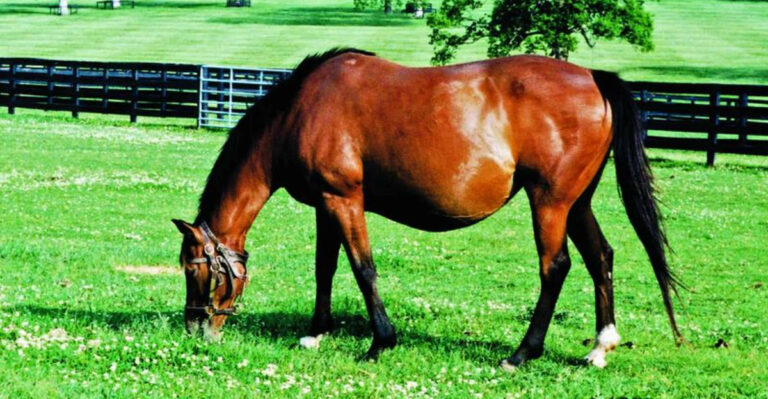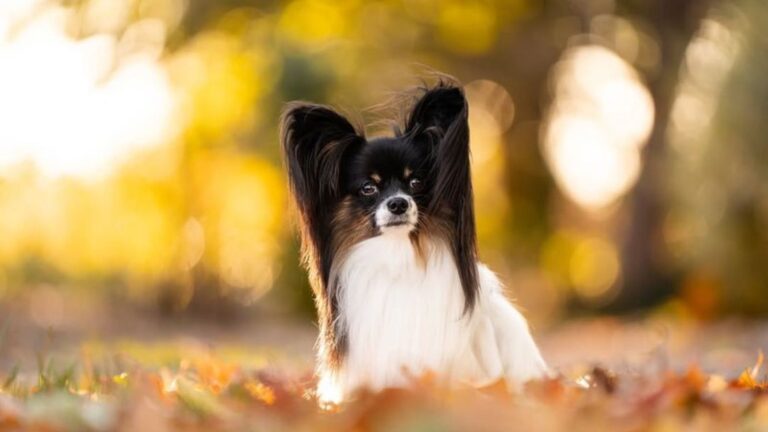Here’s Everything You Need To Know About Wolf Teeth – And More!

Have you ever wondered about those mysterious wolf teeth in horses? These small dental remnants can cause big problems for our equine friends.
Wolf teeth are actually vestigial premolars that some horses develop, and they’ve earned quite a reputation among horse owners and veterinarians alike.
Understanding these tiny teeth can make a huge difference in your horse’s comfort and performance.
1. What Exactly Are Wolf Teeth?
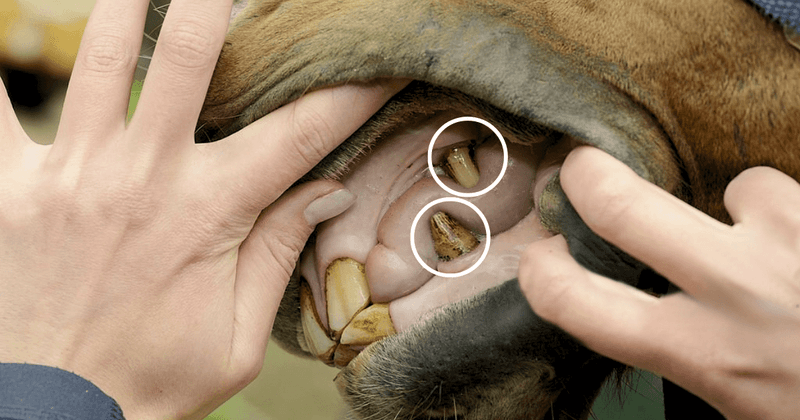
Wolf teeth are small, peg-like teeth that appear just in front of a horse’s first cheek teeth. They’re actually vestigial premolars – evolutionary leftovers from when horses had a different diet millions of years ago.
Most horses develop these teeth between 5-12 months of age, though not all horses will get them. They’re typically less than an inch long with small roots that don’t extend deep into the jawbone.
Unlike the name suggests, these teeth have nothing to do with wolves! The name comes from their pointed appearance and position in the mouth.
2. How Common Are Wolf Teeth In Horses?
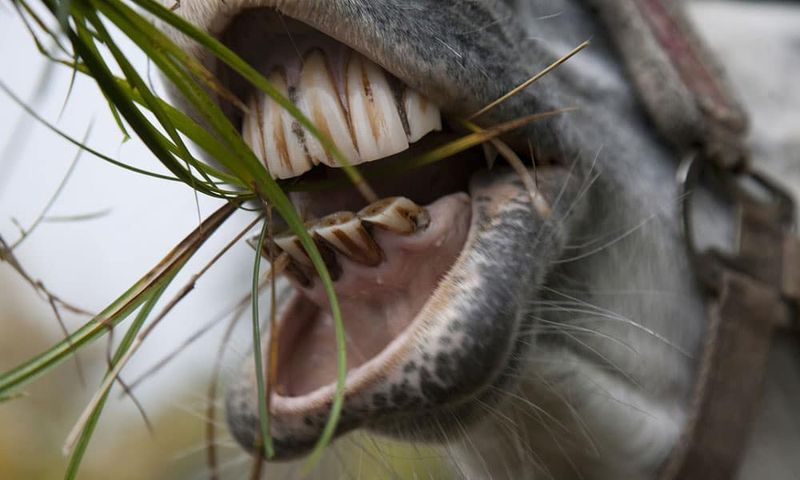
Wolf teeth appear in about 20-80% of horses, showing how variable their occurrence really is. Males tend to develop them more frequently than females, though researchers aren’t entirely sure why this gender difference exists.
Upper wolf teeth are much more common than lower ones. Only about 3% of horses develop wolf teeth on their lower jaw, making these a rare finding during dental exams.
Some horse breeds seem more prone to developing wolf teeth than others, suggesting there may be a genetic component to whether your horse will have these vestigial teeth.
3. Why Wolf Teeth Can Cause Trouble
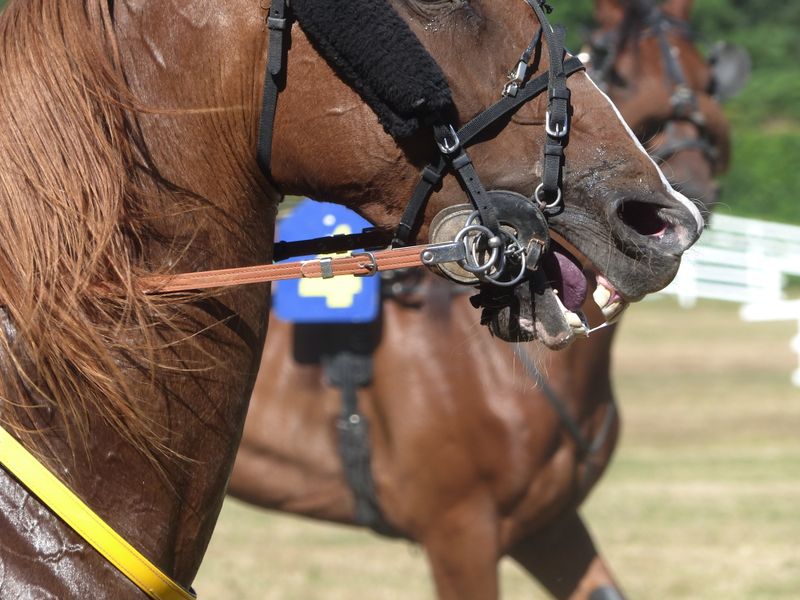
Wolf teeth sit right where the bit rests in a horse’s mouth, creating a painful pressure point when the bit pushes against them. This discomfort often leads to head tossing, resistance to the bit, or difficulty turning in one direction.
Their sharp edges can also poke into the sensitive tissues of the cheek and tongue. Imagine having a sharp tooth constantly jabbing your cheek – ouch!
Because they have shallow roots, wolf teeth can become loose over time. A partially loose wolf tooth causes even more irritation and can interfere with training progress in young horses.
4. Signs Your Horse Might Have Problematic Wolf Teeth

Frequent head tossing or head shaking while riding often signals bit discomfort related to wolf teeth. You might notice your horse resisting the bit more on one side than the other, especially during turning maneuvers.
Unusual mouth behaviors like excessive salivation, chomping on the bit, or opening the mouth while being ridden can indicate wolf tooth pain. Some horses even develop a habit of carrying their head tilted to avoid pressure.
Unexplained performance issues, especially in young horses just starting training, might be traced back to wolf teeth. Weight loss can occur if eating becomes painful.
5. Removing Wolf Teeth: When And Why
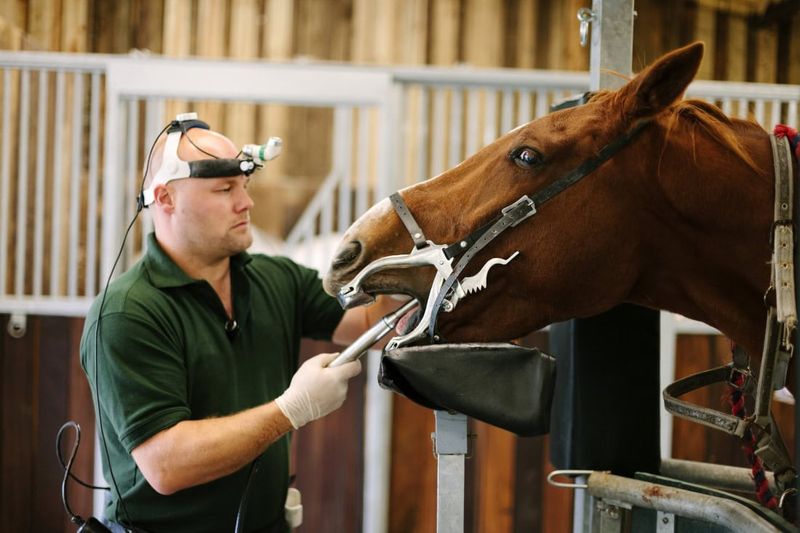
Removal typically happens before a young horse begins training with a bit, around 1-2 years of age. This preventative approach helps avoid training issues before they start and makes the procedure easier since the teeth haven’t fully set.
Performance horses almost always have wolf teeth removed to eliminate any potential source of discomfort. Even if they’re not currently causing problems, many trainers and owners prefer removal to prevent future issues.
The procedure requires sedation and local anesthesia but is relatively quick. Most horses recover within a day or two with minimal aftercare needed.
6. Blind Wolf Teeth: The Hidden Troublemakers

Blind wolf teeth hide beneath the gum tissue, making them especially tricky to detect. You can’t see them during a casual mouth inspection, but they can still cause significant discomfort when a bit presses on the gum covering them.
Only a thorough examination by an equine dentist or vet can reveal these hidden teeth. They’ll carefully palpate the areas where blind wolf teeth typically develop, feeling for hard bumps under the surface.
These submerged teeth often cause mysterious training problems that leave owners puzzled. Many horses with “attitude problems” actually have undiagnosed blind wolf teeth causing pain.
7. The Wolf Teeth Removal Procedure Explained
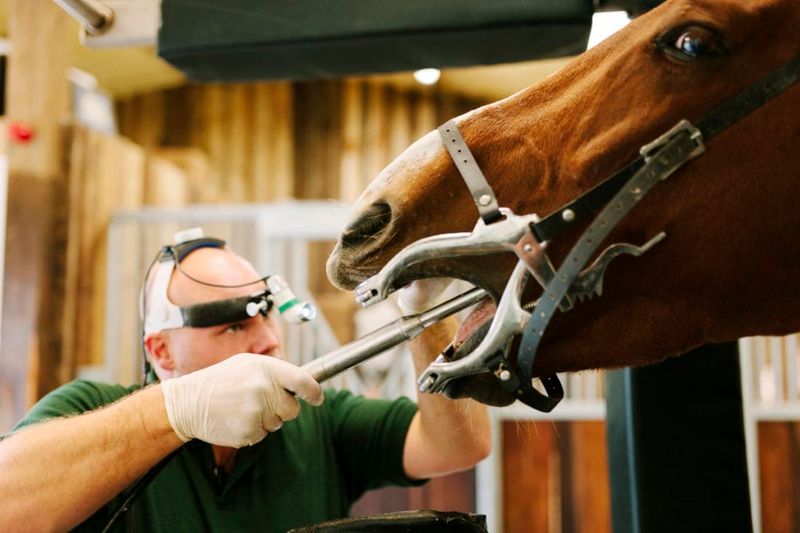
The veterinarian begins by sedating the horse and administering local anesthesia around the wolf teeth. This ensures the procedure is painless while keeping the horse calm and still throughout the process.
Special dental tools loosen the tooth from surrounding tissues. Unlike other extractions, wolf teeth removal doesn’t require much force due to their relatively shallow roots.
The entire procedure typically takes just 15-30 minutes per tooth. Most horses recover quickly, often returning to normal eating habits within hours and resuming work the following day with minimal restrictions.
8. After Extraction: What To Expect
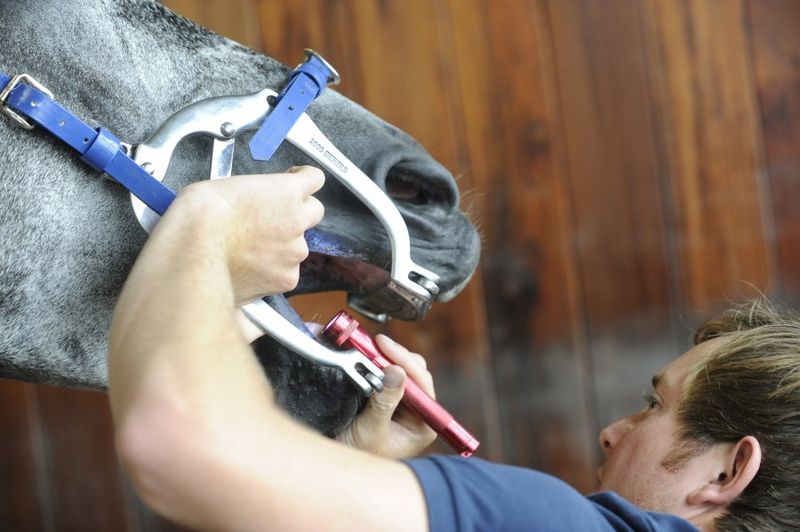
Minor bleeding might occur for a few hours following extraction, but this typically stops on its own. The extraction site forms a small blood clot that protects the area while healing begins underneath.
Most horses can return to normal feeding right away, though some owners provide softer feed for the first day. Cold hosing or ice packs can reduce any swelling, though significant swelling is uncommon.
Complete healing of the extraction site takes about 7-10 days. During this time, the gum tissue closes over the socket, eventually leaving little to no evidence that a tooth was ever there.
9. Evolutionary History: Why Horses Have Wolf Teeth

Millions of years ago, ancient horse ancestors were small forest dwellers that browsed on soft vegetation. These early equids had seven premolars in each jaw quadrant – today’s modern horses typically have just three or four.
As horses evolved to graze on grasses in open plains, their dental needs changed dramatically. Their teeth became larger and more specialized for grinding tough plant material, while the first premolars became unnecessary.
Wolf teeth represent evolutionary leftovers from this ancient dental arrangement. They’re similar to human wisdom teeth – structures our bodies still produce despite no longer needing them for survival.
10. Alternatives To Extraction: Are There Options?
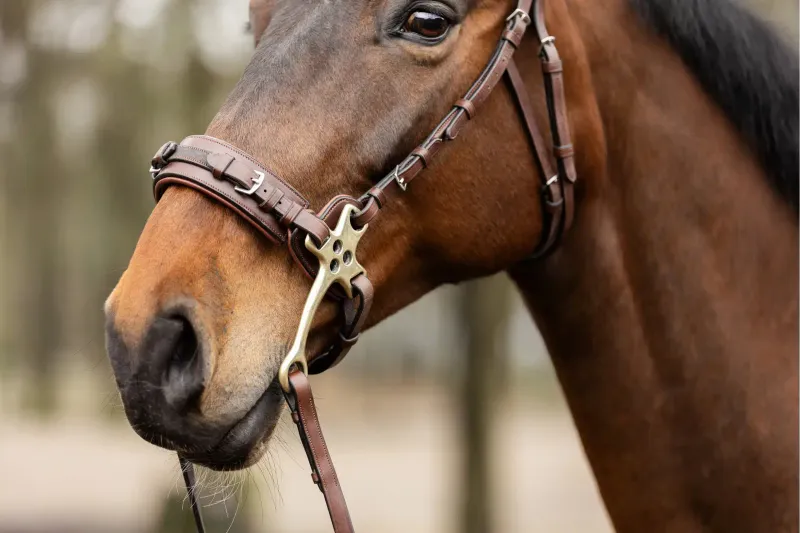
Bitless bridles eliminate pressure on wolf teeth entirely by working without a metal bit in the mouth. Options like hackamores, sidepulls, and crossunder bitless bridles can work well for horses with problematic wolf teeth.
Special bit designs with port mouths or unique shapes can reduce pressure on wolf teeth areas. Consulting with a professional bit fitter helps identify the best option for your horse’s specific mouth conformation.
Some owners opt for careful dental filing (floating) to smooth and round any sharp edges on wolf teeth. This approach works best for teeth positioned farther back that don’t interfere with bit placement.
11. Wolf Teeth Myths Vs. Facts

Contrary to old horsemen’s tales, wolf teeth don’t grow back after removal. Once extracted properly, they’re gone for good! Some confusion occurs when people mistake other dental issues for returning wolf teeth.
Wolf teeth don’t actually cause behavioral problems directly – the pain and discomfort they create when pressed by a bit causes the behavior changes. Horses without bits rarely have issues related to their wolf teeth.
Not every horse needs wolf teeth removed. Horses used without bits (like some trail or pasture horses) or those with wolf teeth positioned far from bit contact may never need extraction.
12. Who Should Remove Wolf Teeth?

Licensed veterinarians are the gold standard for wolf teeth removal. They have the medical training to administer proper sedation, manage any complications, and ensure complete extraction of the tooth root.
Specialized equine dentists often have extensive experience with wolf teeth removal. In some regions, they work alongside vets, with the vet handling sedation while the dentist performs the extraction.
Always check credentials before allowing anyone to perform dental work on your horse. Improper extraction can leave root fragments behind, creating ongoing problems and potentially requiring surgical intervention later.
13. Modern Advances In Equine Dentistry
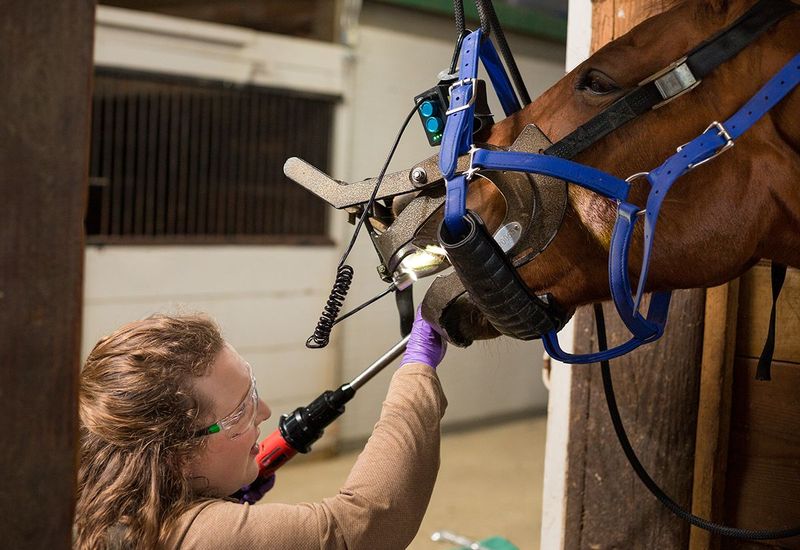
Specialized dental equipment has revolutionized equine dentistry in recent years. Portable power tools with specialized bits allow for more precise and less traumatic extractions compared to traditional manual methods.
Advanced imaging techniques help identify problematic teeth before extraction. Digital X-rays and even CT scans can pinpoint exact locations of blind wolf teeth or unusual root formations.
Improved sedation protocols make the procedure less stressful for horses. Modern combinations of sedatives and local anesthetics ensure the horse remains comfortable while standing throughout the procedure, eliminating the risks associated with general anesthesia.


